The Purpose of Life
We begin by asking the question “what is the purpose of life?” In order to give a sense for where I am coming from, I explain that I think that the purpose of life is…
- To Understand the Universe
- To be Happy, and Make Others Happy
I admit that for the first half of my life I thought that the only purpose of life was to understand the universe. If anything, in light of this exclusive goal, happiness could be seen as a temporary distraction rather than something to pursue for its own sake. Thankfully, as a teenager I was exposed to philosophy of mind, was introduced to meditation, and experimented with psychedelics, all of which pointed me to the fact that (a) we don’t understand consciousness yet, and (b) happiness is really a lot more important than we usually think, even if one is only concerned with the most theoretical and abstract level of understanding possible.
I now regard “to understand the universe” and “to be happy and make others happy” on an equal footing. More so, these two life goals complement each other. On the one hand, understanding the universe will allow you to figure out how to make anyone happy. And on the other hand, being happy and making others happy can allow you to stay motivated in order to figure out the nature of reality. Hence one can think of these two life goals as synergistic rather than as being in opposing camps (of course, at the edges, one will be forced to choose one over the other, but we are nowhere near the point where this is a concern).
By taking these two “purposes of life” seriously we are then faced with a crucial question: What makes an experience valuable? In other words, for someone who is both trying to understand the universe and trying to make its inhabitants as happy as possible, the question “how do you measure the value of an experience?” becomes important.
At the Qualia Research Institute we generally answer that question using the following criteria:
- Does it feel good? (happy, loving, pleasant)
- Does it make you productive (in a good way)?
- Does it make you ethical?
That is to say, the value that we assign to an experience is guided by three criteria. In brief, a valuable experience is one that feels good (i.e. has positive hedonic tone), improves your productivity (in the sense of helping you pursue your own values effectively), and makes you more ethical – both towards yourself and others. That said, for the purpose of this talk, I make it explicit that I will only discuss how to measure (1). In other words, we will concern ourselves with what makes an experience feel good; ethics and productivity are discussed elsewhere.1
What is Bliss?
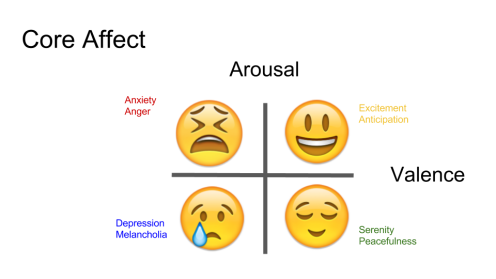
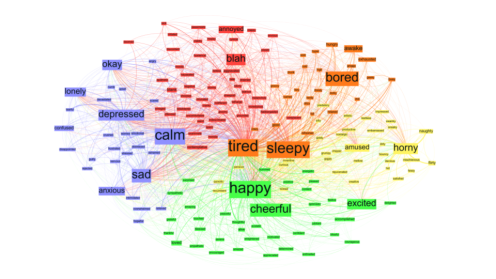
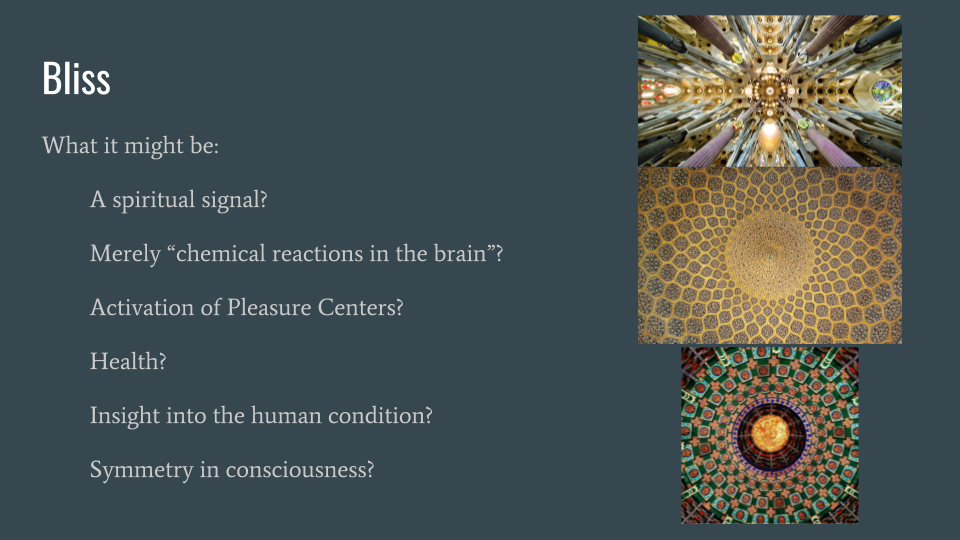
So what makes an experience feel good? The “feel good” quality of an experience is usually called valence in psychology and neuroscience (also described as the “pleasure-pain axis”). This quality is to be distinguished from arousal, which refers to the amount of energy expressed in an experience. Four examples: Excitement is a high-valence, high-arousal state. Serenity is a high-valence, low-arousal state. Anxiety is low-valence, high-arousal. And depression low-valence, low-arousal.
For some people valence and arousal are correlated (either negatively or positively as shown by Peter Kuppens(Kuppens et al. 2013)). Likewise, one’s culture can have a large influence on the way one conceptualizes of valence (or ideal affect, as demonstrated in the extensive work of Jeanne Tsai(Tsai and Park 2014)). That said, valence is not a cultural phenomenon; even mice can experience negative and positive valence.
Even though valence and arousal do seem to explain a big chunk of the differences between emotions, we can nonetheless find many cases where the “texture” of two emotions feel very different even though their valence and their arousal are similar. Hence we ask ourselves: How do we explain and characterize the textural differences between such emotions?
And across all of the possible intensely blissful states on offer (encompassing all of the possible inner meanings present), what exactly is shared between them all at their very core?
Some interpret holistic feelings of wellbeing as a sort of spiritual signal. In this interpretation, feeling at a very deep level that the world is good, that things fall into place perfectly, that you don’t owe anything to anyone, etc. is a sign that you are on the right (spiritual) track. Undoubtedly many people use the (often extreme) positive shift in their valence upon religious conversion as evidence of the validity of their choice. Intense positive valence may not throw Bayesian purists off-balance, but for the rest of the world, blissful experiences are often found as cornerstones of worldviews.
Other people say that bliss is “just chemicals in your brain.” Some claim that it’s more a matter of the functional state of your pleasure centers (themselves affected by dopamine, opioids, etc.) rather than the chemicals themselves. Many others are focused on what usually triggers happiness (e.g. learning, relationships, beliefs, etc.) rather than on what, absolutely, needs to happens for bliss to take place in the simplest experiential terms possible. Most who study this closely become mystics.
Could it be that there’s something structural that makes the experiences feel good? Let’s say that there exists a good-fitting mathematical object that translates brain states to experiences. What mathematical property of that object would valence look like? Our proposal is very simple. In some sense it is the simplest possible theory for the important theory of consciousness. We propose the symmetry theory of valence (or “STV”; historical note: STV was first articulated and argued for in Michael Johnson’s Principia Qualia).
(The important theory of consciousness is the question that asks why experience feels good and/or bad, vs. e.g. the hard problem of consciousness, why consciousness exists to begin with).
The Symmetry Theory of Valence
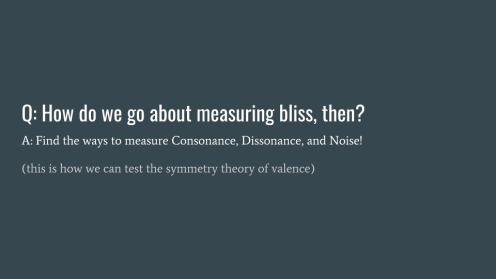
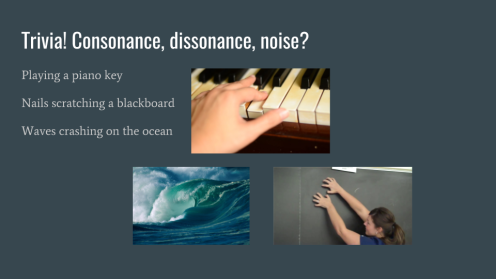
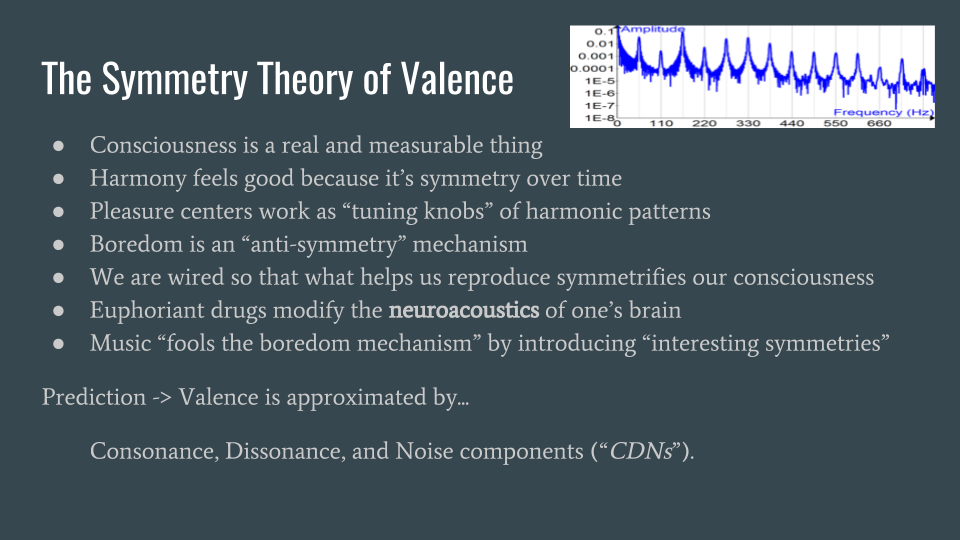
We are pretty confident that consciousness is a real and a measurable phenomenon so we talk freely about the properties of consciousness without getting caught up about whether it exists at all. Now, symmetry is a very general term, how is that precise?
Harmony feels good because it’s symmetry over time. In reality, our moments of experience contain a temporal direction. I call this a pseudo-time arrow, since its direction is likely encoded in the patterns of statistical independence between the qualia experienced. And by manipulating the symmetrical connectivity of the micro-structure of one’s consciousness, one can change the perception of time. It’s a change in the way one evaluates when one is and how fast one is going.
In this model, the pleasure centers would work as “tuning knobs” of harmonic patterns. They are establishing the mood, the underlying tone to which the rest needs to adapt. And the emotional centers, including the amygdala, would be strategically positioned to add anti-symmetry instead. Hence, in this framework we would think of boredom is an “anti-symmetry” mechanism. It prevents us from getting stuck in shallow ponds, but it can be nasty if left unchecked. Cognitive activity may be in part explained by differences in boredom thresholds.
Connectome-Specific Harmonics
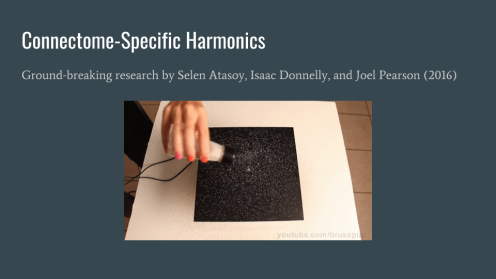
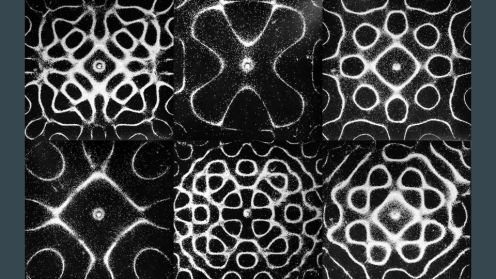
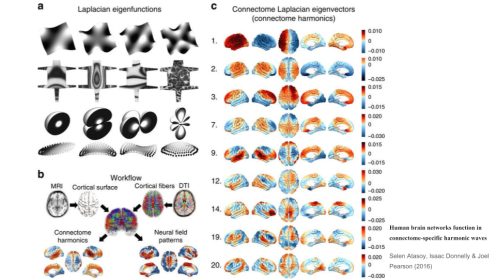
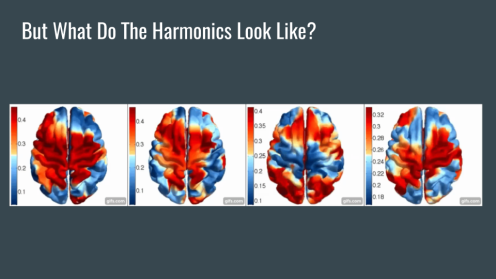
I was at the Psychedelic Science 2017 conference when I saw Selen Atasoy presenting about improvisation enhancement with LSD(Atasoy 2017). She used a paradigm previously developed, whose methods and empirical tests were published in Nature in 2016(Atasoy, Donnelly, and Pearson 2016) but now applied to psychedelic research. For a good introduction check out the partial transcript of her talk.
In her talk she shows how one can measure the various “pure harmonics” in a given brain. The core idea is that brain activity can be interpreted as a weighted sum of “natural resonant frequencies” for the entire connectome (white matter tracks together with the grey matter connections). They actually take the physical structure of a mapped brain and simulate the effect of applying the excitation-inhibition differential equations known for collective neural activity propagation. Then they infer the presence and prevalence of these “pure harmonics” in a brain at a given point in time using a probabilistic reconstruction.
Chladni plates here are a wonderful metaphor for these brain harmonics. This is because the way the excitation-inhibition wavefront propagates is very similar in both Chladni plates and human brains. In both cases the system drifts slowly within the attractor basin of natural frequencies, where the wavefront wraps around the medium an integer number of times. I was in awe to see her approach applied to psychedelic research. After all, Qualia Computing has indeed explored harmonic patterns in psychedelic experiences (ex. 1, ex. 2, ex. 3), and the connection was made explicit in Principia Qualia (via the concept of neuroacoustic modulation).
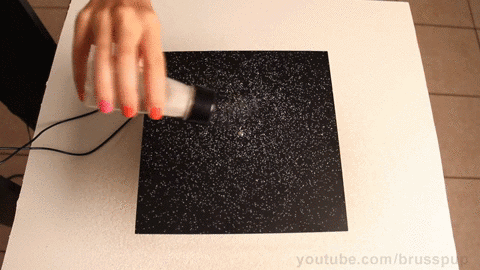
But how do these harmonics look like in the brain? Show me a brain!


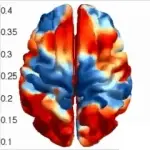
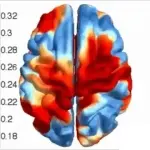
The work by these labs is incredible, and they seem to show that the brain’s activity can be decomposed into each of these harmonics.
At the Psychedelic Science 2017 conference, Selen Atasoy explained that very low frequency harmonics were associated with Ego Dissolution in the trials that they studied. She also explained that emotional arousal, here defined as one’s overall level of energy in the emotional component (i.e. anxiety and ecstasy vs. depression and serenity), also correlated with low frequency harmonic states. On the other hand, high valence states were correlated with high frequency brain harmonics.
These empirical results are things that I claim we could have predicted with the symmetry theory of valence. I then thought to myself: let’s try to come up with other predictions. How should we consider the mixture of various harmonics, beyond merely their individual presence? How can we reconstruct valence from this novel data-structure for representing brain-states?
The Algorithm for Quantifying Bliss
Starting my reasoning from first principles (sourced from the Symmetry Theory of Valence), the natural way to take a data-structure that represents states of consciousness and recover its valence (in cases where samples occur across time in addition to space), is to try to isolate the noise, then proceed to quantify the dissonance, and what remains becomes what’s consonant. Basically, one will estimate the rough amount of symmetry (over time), as well as the degree of anti-symmetry, and the level of noise total.
In other words, I prophesize that we can get an “affective signature” of any brain state by applying an algorithm to fMRI brain recordings in order to estimate the degree of (1) consonance, (2) dissonance, and (3) noise within and across the brain’s natural harmonic states. This will result in what I call “Consonance-Dissonance-Noise Signatures” of brain states (“CDNS” for short) consisting of three histograms that describe the spectra of consonance, dissonance, and noise in a given moment of experience. The algorithm to arrive at a CDNS of a brain state is as follows:
Remove some of the noise in the brain state by applying the technique in Atasoy (2016)(Atasoy, Donnelly, and Pearson 2016) and recovering the distribution of the best approximation possible for the harmonics present (you may apply some further denoising on the harmonics when taken as a collective). Then estimate the total dissonance of the combination of harmonics by taking each pair of harmonics and quantifying their mutual dissonance. Finally, subtract the dissonance from “all of the interactions that could have existed” and what’s left ends up being the consonance. This way you obtain a Consonance, Dissonance, Noise Signature.

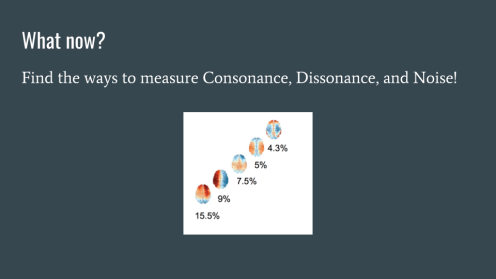
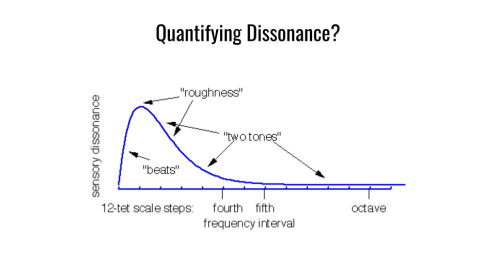
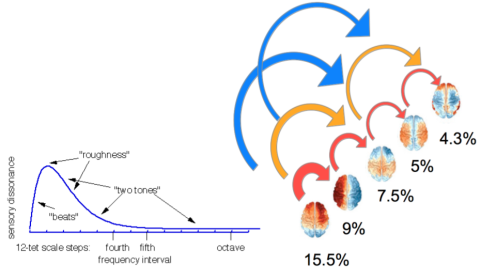
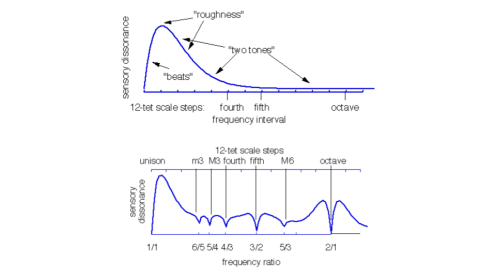
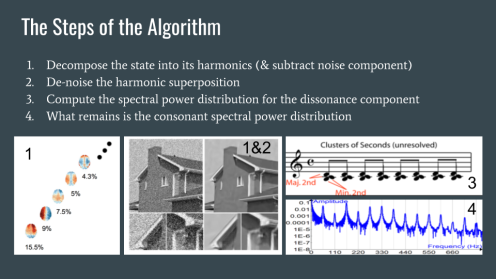
Each of these three components will have their associated spectral power distribution. The noise spectrum is obtained during the first denoising step (as whatever cannot be explained by the harmonic decomposition). Then the dissonance spectrum is a function of the minimum power of pairs of harmonics that exist within the critical band of each other, as well as the frequencies of the beating patterns(Ball 2012).
Quantifying Dissonance?
In order to quantify dissonance we use a method that may end up being simpler than what you need to calculate dissonance for sound! E.g. in Quantifying the Consonance of Complex Tones With Missing Fundamentals(Chon 2008) we learn that the human auditory system may at times detect dissonance even when there is no actual dissonance in the input. That is, there are auditory illusions pertaining to valence and dissonance. Based on the missing fundamental one can create ghost dissonance between tones that are not even present. That said, quantifying dissonance in a brain in terms of its harmonic decomposition may be easier than quantifying dissonance in auditory input, precisely because the auditory input (and any sensory input for that matter) contains many intermediary pre-processing steps. The auditory system is relatively “direct” when compared to, e.g. the visual system, but you will still see some basic signal processing done to the input before it influences brain harmonics. The sensory systems, being adapted to meet the criteria of both interfacing with a functioning valence system and representing the information adequately (in terms of the real-world distribution of inputs) serve the function of translating the inputs into usable signals. I.e. frequency-based descriptions, often log-transformed, in order to arrive at valence gradients. For this reason, the algorithm that describes how to extract valence out of a brain state may turn out to be simpler than what you need to predict the hedonic quality of patterns of sound (or sight, touch, etc).
In brief, we propose that we can compute the approximate amount of dissonance between these harmonics by seeing how close they are in terms of spatial and temporal frequencies. If they are within the critical window then they will be considered as dissonant. There is likely to be a peak dissonance window, and when any pair of harmonic states live within that window, then experiencing both at once may feel really awful (to quantify such dissonance more precisely we would use a dissonance function as shown in Chon 2008(Chon 2008)). If indeed symmetry is intimately connected to valence, then highly anti-symmetrical states such as what’s produced by overlapping brain harmonics within the critical band may feel terrible. Remember, harmony is symmetry over time. So dissonance is anti-symmetry over time. It’s worth recalling, though, that in the absence of dissonance and noise, by default, what remains is consonance.
Visualizing Emotions as CDNS’s of States of Consciousness
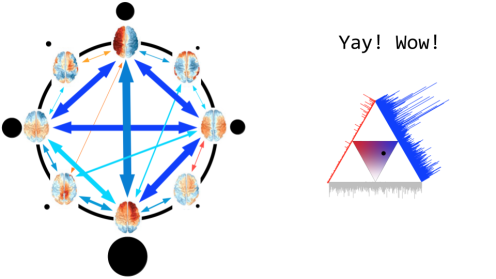
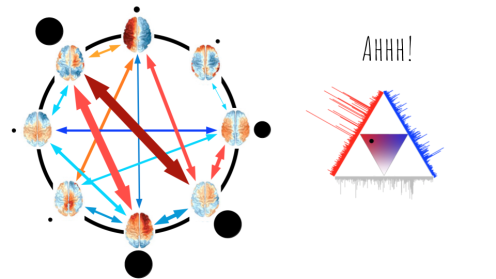

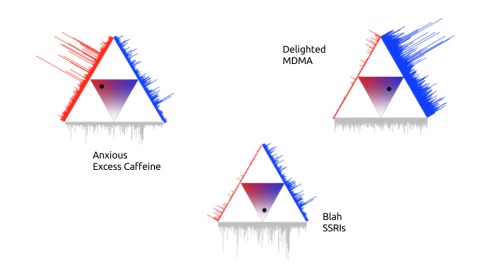
Above you can find two ways of visualizing a CDNS. Before we go on to the predictions, here we illustrate how we think that we will be able to see at a glance the valence of a brain with our method. The big circle shows the dissonance and consonance for each of the brain harmonics (the black dots surrounding the circle represent the weights for each state). If you want the overall dissonance in a given state, you add up the red-yellow arrows, whereas if you want the total consonance, you add the purple-light-blue arrows. The triangles on the right expand upon the valence diagram presented in Principia Qualia. Namely, we have a blue (positive valence/consonant), red (negative valence/dissonant), and grey (neutral valence/noise) component in a state of consciousness. Each of these components has a spectrum(Lee 2014); the myriad textures of emotional states are the result of different spectral signatures for hedonically loaded patterns.
Testable Predictions

We predict that intense emotions/experiences reported on psychedelics will result in states of consciousness whose harmonic decomposition will show a high amount of energy to be found in the pure harmonics (this was already found in 2017 as explained in the presentation(Atasoy 2017), so let’s count that as a retrodiction). People who report being “very high” will have particularly high amounts of energy in their pure harmonics (as opposed to more noisy states).
The predicted valence for their experiences will be a function of the particular patterns (in terms of relative weights) of the various harmonics. Those which generate highly harmonic CDNS will be blessed with high valence experiences. And those who experience high dissonance, as empirically measured, will report negative feelings (e.g. fear, anxiety, nausea, weird and unpleasant body load, etc). In particular, we can explore the shape of highly harmonic states. In this framework, MDMA would be seen as likely to work by increasing the energy expressed by an exceptionally consonant set of harmonics in the brain.
A point to make here is that predicting “pure harmonics” on psychedelics (evidently simple and ordered patterns), would seem to go counter to the recently accrued empirical data concerning entropy in the tripping brain.2 But we also know that the psychedelic brain can produce ridiculously self-similar near-informationless yet highly intense moments of experience preceded by a symmetrification process. Indeed, there are several symmetric attractors for the interplay of awareness and attention at various levels of “consciousness energy” and quality of mood. These states, in turn, not only are hedonically charged, but also allow the exploration of high-energy qualia research (since the implicit symmetry provides an energy seal). Highly energetic states of consciousness can be encapsulated in a highly symmetrical network of local binding.
On the other hand, we predict that people on SSRIs will show an enhanced amount of noise in their CDNS. A couple of slides back, this was represented as a higher loading of activity in the grey component of the triangular visualization of a CDNS. Likewise, some drugs will have various effects on the CDNS(Lee 2014), such as stimulants inducing more consonance in high frequencies, whereas opioids and hypnotics having signatures of inducing high consonance in the low frequencies.
Summary of Predictions About Drug Effects
- Psychedelic substances will increase the overall power of the brain’s pure harmonics, and thus result in a CDN Signature characterized by: (a) high consonance of all frequencies, (b) high dissonance of all frequencies, and (c) low noise of all frequencies. Criticality will be observed by way of the CDNS having high variance.
- MDMA will produce a very specific range of states that have on the one hand very pure harmonic states of high frequencies, and on the other, very small collective dissonance and noise. In other words: (a) high amounts of high-frequency consonance, (b) low amounts of dissonance of all frequencies, and (c) low noise of all frequencies.
- Any “affect blunting” agent such as SSRIs, ibuprofen, aspirin, acetaminophen, and agmatine, will produce CDNS characterized by: (a) reduced consonance of all frequencies, (b) reduced dissonance of all frequencies, and (c) increased noise in either some or all frequencies. We further hypothesize that different antidepressants (e.g. citalopram vs. fuoxetine) will look the same with respect to reducing the C and D components, but may have differences in the way they increase the N spectrum.
- Opioids in euphoric doses will be found to (a) increase low frequency consonance, (b) decrease dissonance for all frequencies but especially the high frequencies, and (c) slightly increase noise across the board.
- Stimulants will be found to (a) increase medium and high frequency consonance, (b) leave dissonance fairly unaltered, and (c) reduce noise for all frequencies but especially those in the upper end of the spectrum.
Predictions About Emotions
For now, here are the specific predictions concerning emotions that I am making:
- The energy of the consonant (C) component of a CDNS will be highly correlated with the amount of euphoria (pleasure, happiness, positive feelings, etc.) a person is experiencing.
- The energy of the dissonant (D) component will have a high correlation with the amount of dysphoria (pain, suffering, negative feelings, etc.) a person feels.
- The energy of the noise (N) component will be correlated with flattened affect and blunted valence (i.e. feeling neither good nor bad, like there is a fog that masks all feelings).
- If one creates a geometric representation of the relationships between various brain states using their respective CDNS similarities as a distance metric for emotional states using Multi-Dimensional Scaling(Jung 2013) (MDS) techniques, one will be able to recover a really good approximation of the empirically-derived dimensional models of emotions (cf. dimensional models of emotion; Wire-heading Done Right). In other words, if you ask your participants to tell you how they feel during the fMRI sessions and then associate those emotions to their instantaneous CDNS, and then you apply multidimensional scaling to the resulting CDNS, you will be able to recover a good dimensional picture of the state-space of emotions. I.e. “subjective similarity between emotions” will be closely tracked by the geometric distance between their corresponding CDNS:
- Applying MDS scaling to the C component of the CDNS will result in a better characterization of the differences between positive emotions. Applying MDS to the D component will result in a better characterization of the differences between negative emotions. And, Applying MDS to the N component will result in a better characterization of the differences between valence-neutral emotions.
- Applying MDS to the D component will result in a better characterization of the differences between negative emotions. And,
- Applying MDS to the N component will result in a better characterization of the differences between valence-neutral emotions.
The Future of Mental Health
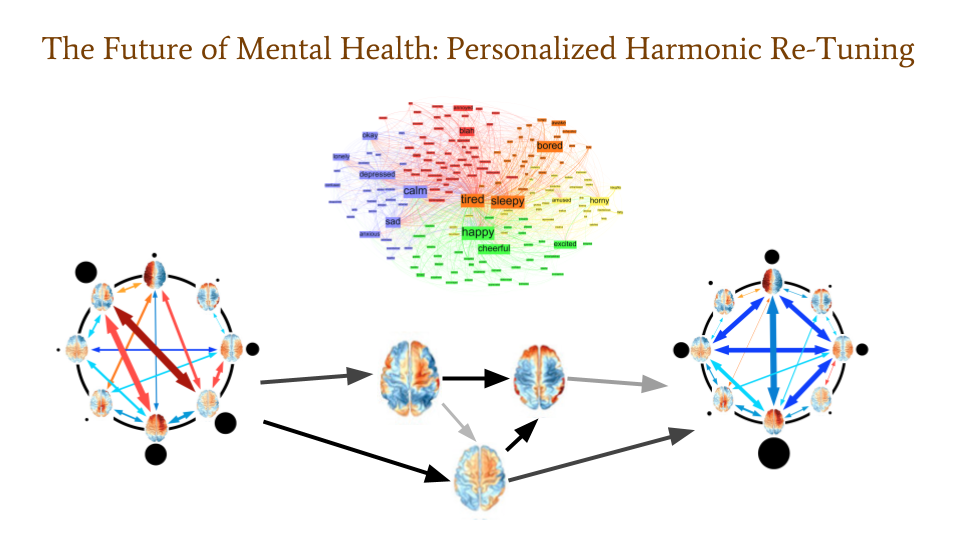
Sir, your 17th harmonic is really messing up the consonance of your 19th harmonic, and it interrupts the creative morning mood you recently enjoyed. I suggest taking 1mg of Coluracetam, listening to a selection of Diamond songs, and RD23 [stretching exercise]. Here’s your expected CDNS.
Penfield mood organs may not be as terrible as they seem. At least not if you’re given a good combination of personalized settings, and a manual to wire-head in the proper manner. In such a situation, among the options available, you will have the ability to choose an experientially attractive, healthy, and sustainable set of moods indefinitely.
The “clinical phenomenologist” of the year 2050 might look into your brain harmonics, and try to find the shortest paths to nearby state-spaces with less chronic dissonance, fishing for high-consonance attractors with large basins to shoot for. The qualia expert would go on to provide you various options that may improve all sorts of metrics, including valence, the most important of them all. If you ask, your phenomenologist can give you trials for fully reversible treatments. You sample them in your own time, of course, and test them for a day or two before deciding whether to use these moods for longer.
Personalized Harmonic Retuning
I assume that people will be given just about enough retuning to get back to their daily routines as they themselves prefer them, but without any sort of nagging dissonance. Most people will probably continue on with their preference architectures relatively unchanged. Indeed, that will be a valued quality for a personalized harmonic retuning product. Having adequate mood devices that don’t mess up your existing value system might eventually become a highly understood, precision-engineered aspect of mainstream mental health. At least compared to the current (pre-psychedelic re-adoption 2017) paradigms. Arguably, even psychedelic therapy is pretty blunt in a way. Not in the sense of blunting the hedonic quality of your experience (on the contrary). But in the sense of applying the harmonization process indiscriminately.
For the psychonauts (hopefully they are not too rare by then), who still want to investigate consciousness even though human life is already full of love (in the future), we will have a different arrangement. They are free to explore themselves while being part of a research institute. Indeed, pursuing the purpose of understanding the big picture (including consciousness) will require the experimental method. More so, exploring the state-space of consciousness will, for the foreseeable future, be a way to find new ways of making others happy. People will continue to explore alien state-spaces in the search of highly-priced high-valence states. At least for some scores of generations valence engineering is bound to continue to be economically profitable. As we discover new drugs, new treatments, new philosophical trances, new interpretations and expressions of love, and so on, the economy will adapt to these inventions. We already live in an informational economy of states of consciousness, and the future is likely to be like that as well. Except that consciousness technologies will be immensely more powerful.
Barring the unlikely emergence of anti-hedonist Spartan self-punishing transhumanist social movements enabled with genetic technology, I don’t anticipate major obstacles in the eventual widespread use of mood organs. In fact, the wide adoption of SSRIs in some pockets of society shows that the general public is willing and interested in minor self-adjustments to deal with chronic negativity. Hedonic technology is in its early days, but with a root understanding of the nature of valence, the sky is the limit.
Case studies – SSRIs & Psychedelics
Let’s take a closer look at SSRIs and psychedelics in light of the Symmetry Theory of Valence.
SSRIs have an overall effect of blunting one’s experience at pretty much every level imaginable. Usually just a little, enough to help people re-establish a new order between their harmonics, in a more noisy, less intense range of moods. Some people may benefit from this sort of intervention. Now, also it’s worth pointing out the possible side effects, which have the common theme of reducing the structural integrity of the micro-structure of consciousness. Thus, the highly ordered pleasant and unpleasant experiences get softened. Whether this generalized softening is beneficial depends on many factors. Psychonauts usually avoid them as much as possible in order to protect the psychoacoustical potential of their brain, were they to desire to use this potential sometime in the future.
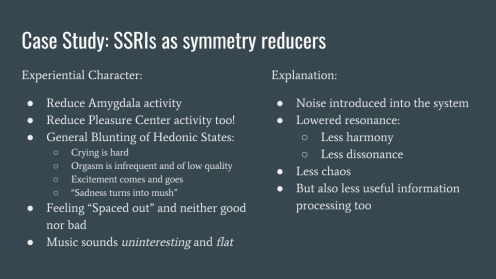
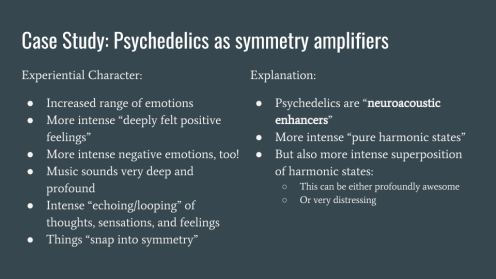
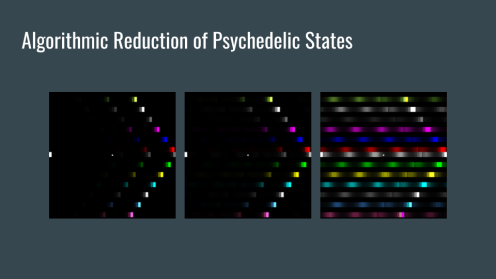


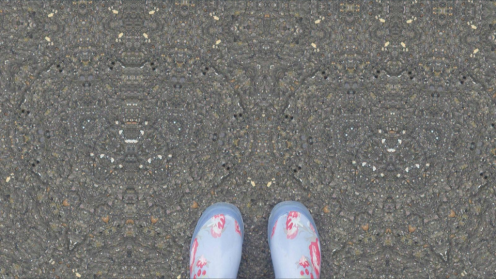

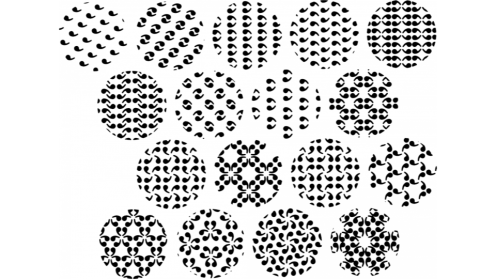
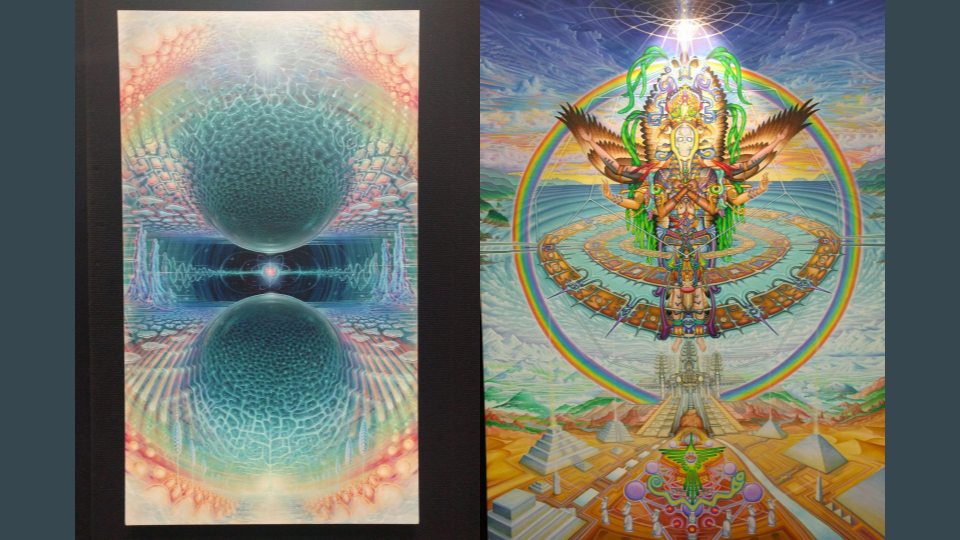



Psychedelics, in this framework, would be interpreted as neuroacoustic enhancers. These agents trigger, via control interruption(Kent 2010), a more “echo-ey acoustic environment for one’s consciousness.” Meaning, any qualia experienced under the influence lasts for longer (the decay of intensity of experience as a function of time since presentation of stimuli becomes a lot “slower” or “fatter”). On high doses, the intensity of each component of a cycle of an experience can feel just as intense, and thus one might find oneself unable to locate oneself in time. Sometimes intense feelings return cyclically, and ultimately at strong doses, experiential feedback dominates every aspect of one’s experience, and there isn’t anything other than standing waves of synesthetic psychedelic feelings.
Peak symmetry states with their associated valence would be predicted to be far more accessible on highly harmonic states of consciousness. So psychedelics and the like could be carefully used to explore the positive extreme of valence: Hyper-symmetrical states. That said, for responsible exploration, a euphoriant will be needed to prevent negative psychedelic experiences.
Final Thoughts
A Harmonic Society is a place where everyone recognizes what makes other sentient beings love life. It’s a place in which everyone deeply understands the valence landscapes of other beings. People in such a society would know that a zebra, an owl, and a salamander all share the pursuit of harmonic states of consciousness, albeit in their own, often different-looking, state-spaces of qualia. We would understand each other far more deeply if we saw each other’s valence landscapes as part of a big state-space of possible preference architectures. Ultimately, the pursuit of existential bliss and the ontological question (why being?) would incite us to explore each other through consciousness technologies. We will have an expanded state-space of available possible moods, both individual and collective, increasing our chances of finding a new revolutionary understanding of consciousness, identity, and what’s possible for post-hedonium societies.

My hypothesis strongly implies that ‘hedonic’ brain regions influence mood by virtue of acting as ‘tuning knobs’ for symmetry/harmony in the brain’s consciousness centers. Likewise, nociceptors, and the brain regions which gate & interpret their signals, will be located at critical points in brain networks, able to cause large amounts of salience-inducing antisymmetry very efficiently. We should also expect rhythm to be a powerful tool for modeling brain dynamics involving valence- for instance, we should be able to extend (Safron 2016)’s model of rhythmic entrainment in orgasm to other sorts of pleasure. - Michael Johnson in Principia Qualia, page 52
Tags
CSHW, Harmonic Society, Hedonic Tone, Neuroacoustics, SSRI, STV, Valence, Psychophysics
I will note that to define what’s ethical one ultimately relies on beliefs about personal identity; truly frame-independent systems of morality are exceptionally hard to construct.↩︎
The Entropic Brain(Carhart-Harris et al. 2014) theory portrays psychedelia in terms of increased entropy, but also, and most importantly, focuses on criticality. Just thinking about entropy would not distinguish between adding white noise and adding interesting patterns. In other words, from the point of view of simple entropy without any spectral (or nonlinear) analysis, SSRIs and psychedelics are doing pretty much the same thing. So the sense of “entropy” that matters will have to be a lot more detailed, showing you in what way the information encoded in normal states of consciousness changes as a function of entropy added in various ways. On psychedelics one does indeed find highly ordered crystal-like states of consciousness (which I’ve described elsewhere as peak symmetry states), and as far as we know those states are also some of the most positively hedonically charged. Hence, at least in terms of describing the quality of the psychedelic experience, leaving symmetry out would make us miss an important big-picture kind of quality for psychedelics in general and their connection to valence variance.↩︎